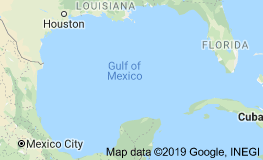John Willoughby: Greene Publishing, Inc.
Over recent months, reports of illnesses related to flesh-eating bacteria, contracted from the waters of the Gulf of Mexico, have surfaced all across the United States. But what is flesh-eating bacteria? Why is it deadly and how can you protect yourself from it?
One of the first reported cases came from Ozona, Fla. after an April fishing trip. Toward, the beginning of summer, more cases began developing along the Florida panhandle, including Destin Beach and St. George Island. One of the victims was an Ohio resident who nearly lost his foot after contracting the bacteria in Tampa Bay. Manatee County Beach was also another place where a Florida woman died from the disease, which health officials named vibrio vulnificus
According to the Florida Department of Health, vibrio vulnificus is a bacterium that normally lives in warm seawater and is part of a group of vibrios that are called "halophilic" because they require salt. Vibrio vulnificus is a naturally-occurring bacteria in warm, brackish seawater and infections are rare.
The Centers for Disease Control and Prevention (CDC) states that vibrio vulnificus is one of about a dozen species of vibrio bacteria that can cause human illness, which is called vibriosis. The CDC continued to state that vibrio naturally lives in certain coastal waters and is present in higher concentrations between May and October when water temperatures are warmer. Those months overlap with the time when hurricanes and tropical storms are most likely to affect the United States mainland and many US territories.
Since 2009, reported cases of vibrio vulnificus have been relatively high, with the most reported cases being in 2018 with 42 cases. The most death-related infections were reported in 2015, with 14 deaths. Between 1988 and 2006, the CDC received over 900 reports of infections from the Gulf Coast states, where most cases occur. Approximately 50 percent of the time, vibrio vulnificus infections are fatal.
Infection can occur when raw shellfish, particularly oysters, are consumed. Since the bacterium thrives in warm water, people with open wounds or scrapes can be exposed to vibrio vulnificus through direct contact with seawater. Luckily, there is no evidence of person-to-person transmission of this infection.
The FDOH states that infections can be diagnosed by stool, wound or blood cultures. Ingestion of food or water containing vibrio vulnificus can cause abdominal pain, vomiting and diarrhea and can also cause an infection of the skin when open wounds are exposed to infected warm seawaters; which can lead to ulcers and the breakdown of skin.
For those with weakened immune systems, vibrio vulnificus infections can be a serious concern, particularly those with chronic liver disease. The FDOH states that the bacterium can invade the bloodstream, causing a severe and life-threatening illness with symptoms like fever, chills, decreased blood pressure and blistering skin lesions.
The FDOH provides tips to help protect yourself and others when handling shellfish and wading or swimming in waters:
Do not eat raw oysters or other raw shellfish (clams, mussels). Cook shellfish thoroughly.
For shellfish in the shell, either boil until the shells open and continue boiling for five more minutes, or steam until the shells open and then continue cooking for nine more minutes. Do not eat those shellfish that do not open during cooking. Boil shucked oysters at least three minutes or fry them in oil for at least 10 minutes at 375 degrees Fahrenheit.
Avoid cross-contamination of cooked seafood and other foods with raw seafood and juices from raw seafood.
Eat shellfish promptly after cooking and refrigerate leftovers.
Avoid exposure of open wounds or broken skin to warm salt or brackish water, or to raw shellfish harvested from such waters.
Wear protective clothes when handling raw shellfish.
If vibrio vulnificus is suspected, seek medical assistance immediately, as antibiotics improve survival. For more information on care and treatment, log onto cdc.gov. For information about potential dangers of raw oyster consumption, call the seafood hotline, available 24 hours a day, at 1 (800) 332-4010.

